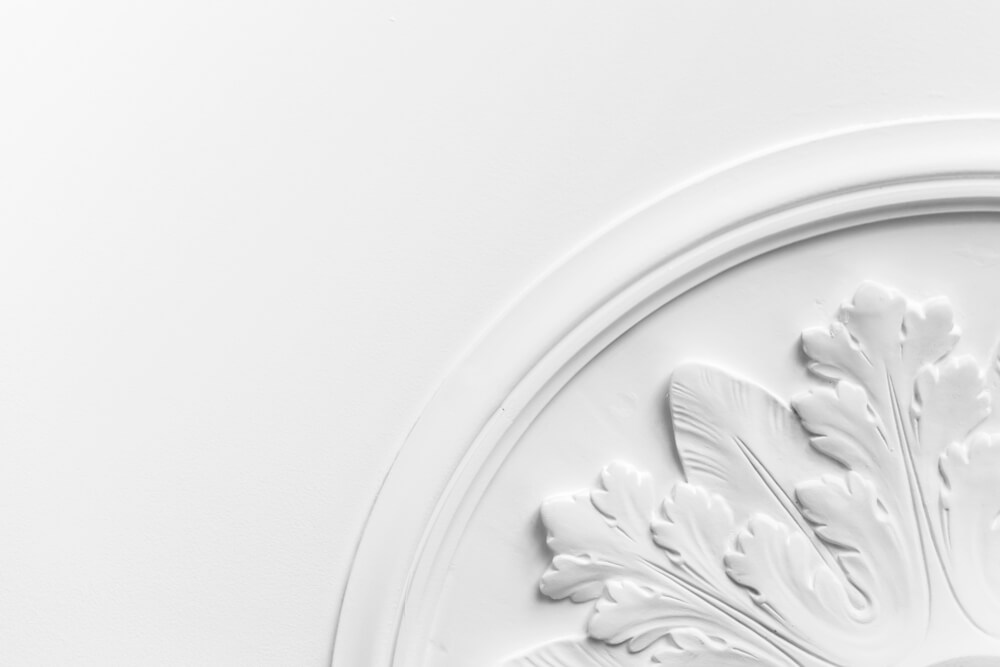Plaster for Home Decor

In our post today, we want to talk about using plaster in your home decor for ceilings and walls. It’s a painting technique that goes back in time to Ancient Greece and Rome. Plaster was also a very popular decor element in Arab history but probably reached its highest peak of popularity during the Renaissance.
Many people paint their walls a solid color and forget about them. But there are actually plenty of ways to paint your home with creativity and originality.
And remember that you can find all kinds of paint in stores, which will make it easier to find the best one for each of your rooms. Washable, hypoallergenic, odorless, anti-mold, tempera… these are just a handful of options for your home.
Decorative paints are a wonderful idea. You can use them to embellish your home interiors. To be specific, you can use them to create eye-catching, original finishes.
In light of all the possibilities, we wanted to bring your attention to plaster, which is a paste made from lime, marble dust, gesso, and natural pigment. If you are careful, you can apply the plaster to your walls yourself.

Advantages of using plaster for your home decor
Let’s go over the main advantages of this technique so you can have it in mind when you need a great idea for your ceilings and walls.
First, plaster lasts a long time if it has the time to dry correctly. It’s also waterproof, which is a helpful benefit for exteriors or interior areas that are prone to humidity or water stains, such as kitchens or bathrooms.
While plaster isn’t the most popular option for homes (unlike churches or palaces), you can buff (giving it a finish similar to marble), work and mold it for your decor. It’s a great original decor option.
On top of that, it offers plenty of variety as well. You can choose not only your color but texture, finishes, and treatments as well. Plaster also adapts perfectly to any surface as long as you prepare it correctly; it should be solid, consistent and clean.
Lastly, we’ll explain this further on in our post but plaster is quite easy to maintain and doesn’t require frequent cleaning.
Cleaning plaster walls and ceilings
You can easily find cleaning products in home decor or furniture stores. Make sure to look for products that contain wax, which is often a component in cleaners for wooden floors.
But you can also clean with the products that you already have at home. First, cover the entire surface with a warm soap-water mixture using a neutral soap. Using a sponge will work best.
Once you’ve eliminated all the surface stains and marks, leave the entire surface area to dry. When it’s completely dry, take some gauze or cloth bandage and apply the wax evenly onto the entire area. Even out the wax with your hand (covered) by moving it in circular movements.
When you’re finished, your ceiling or wall will look just like new. But remember, you don’t have to clean them very frequently. Cleaning them every year or two will suffice.

A beautiful and original effect
First and foremost, we want to inform you know that the most popular plaster varieties are Venetian and stucco, or plaster used for exteriors, applied with a hot iron.
You should know exactly where you want to apply your plaster – home exteriors aren’t the same as a bedroom wall. Choose an appropriate plaster option for the area where you want to apply it. For example, Venetian plaster is the more modern approach and works only indoors.
As we mentioned earlier, remember that you have different colors, finishes, and effects at your disposal. In addition, we want to warn you that quality, long-lasting plasters can be expensive. These days, there are plenty of cheaper options but they won’t give you the best results.
All cited sources were thoroughly reviewed by our team to ensure their quality, reliability, currency, and validity. The bibliography of this article was considered reliable and of academic or scientific accuracy.
Alfonso, José Ignacio. “Tratamiento de revestimientos continuos de mortero de cal enfoscados, revocos y estucos”. Revista de Edificación. 1997. Información disponible en el siguiente enlace: http://dadun.unav.edu/bitstream/10171/16803/1/RE_Vol%2025_08.pdf
González Yunta, F, González Cortina, M y Lasheras Merino, F. “Influencia del tratamiento «a fuego» en las características del estuco tradicional con cal“. Revista Informes de la construcción. 2015. Información disponible en el siguiente enlace: http://informesdelaconstruccion.revistas.csic.es/index.php/informesdelaconstruccion/article/view/3985








